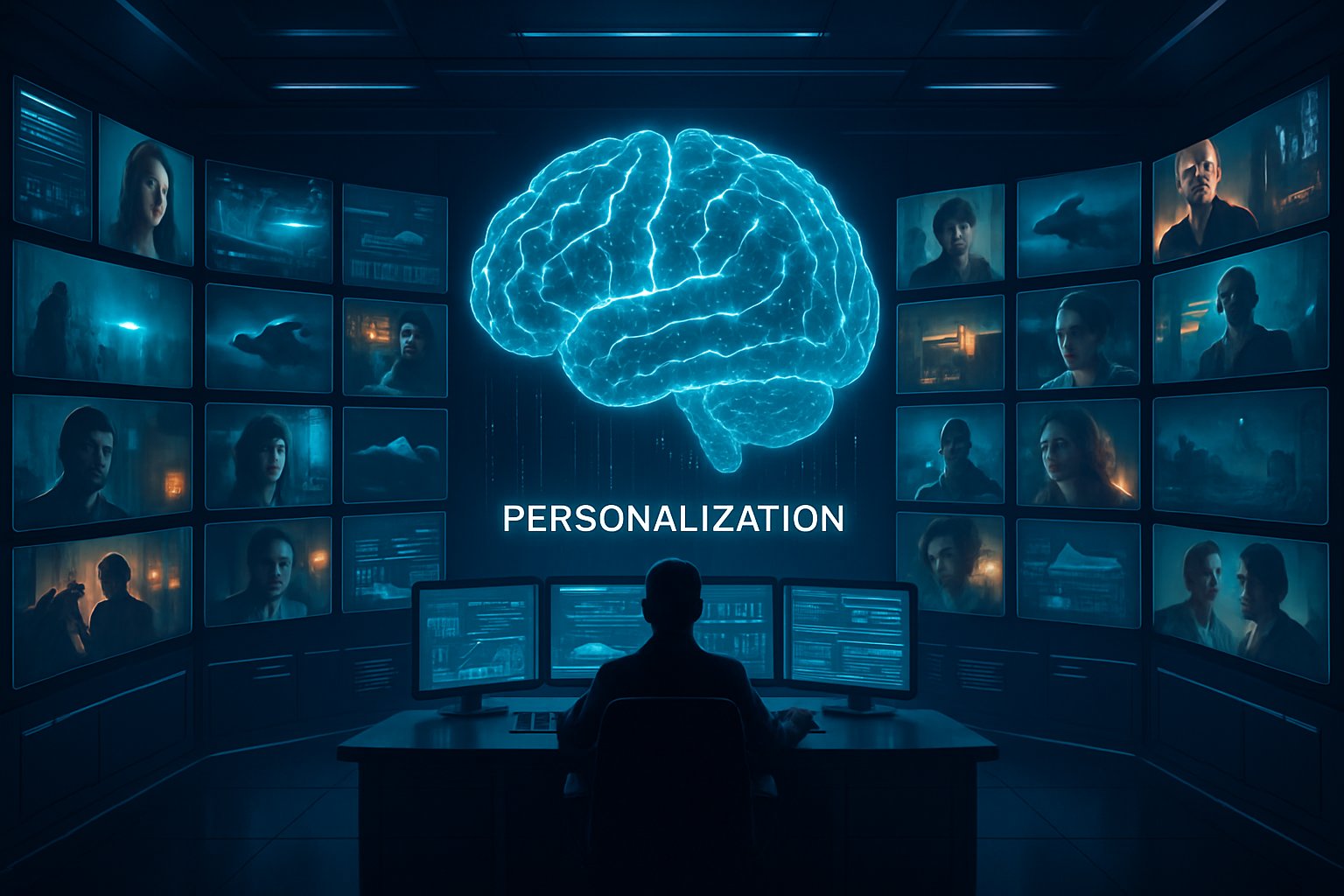
AI CERTS
6 hours ago
Netflix Advances Streaming Personalization With Unified AI Models
Moreover, the shift arrives while 94 million viewers use the ad tier, raising monetization stakes. Industry leaders therefore watch closely as Netflix blends AI research with bold product experiments.
In contrast, earlier stacks relied on dozens of siloed models serving narrow tasks. Now, a single foundation model learns from hundreds of billions of interaction tokens. Meanwhile, an OpenAI powered search beta lets members ask for “gritty heist thrillers” or “feel-good Sunday” picks. Together, the moves illustrate Netflix’s next phase of streaming personalization and competitive defense.

Foundation Model Shift
Foundation models collapse separate pipelines into one multi-task architecture. Furthermore, Netflix tokenizes plays, seeks, and pauses as language-like tokens. The model then predicts next tokens, producing title and member embeddings for retrieval and ranking. Consequently, engineering teams reuse embeddings across search, artwork, and ad serving. Ultimately, the blueprint aims to elevate streaming personalization across every surface.
Cold-start remains difficult because new titles lack interaction history. Therefore, Netflix initializes fresh embeddings using metadata and graph similarity. Incremental training updates the model nightly without full retraining, controlling compute costs. Analysts in the NFLX pre-market guide highlight these efficiencies when modeling margin expansion.
- 300 million paid memberships reported January 2025
- 94 million monthly ad-tier users announced May 2025
- Hundreds of billions of training interaction tokens
- Double-digit year-over-year revenue growth
These numbers underscore the scale motivating model consolidation. However, size alone will not guarantee precise viewing pattern analysis.
The foundation model simplifies maintenance and fuels rapid iteration. Nevertheless, user-facing features determine visible gains, which leads to generative search.
Generative Search Beta
April 2025 saw Netflix launch a natural-language discovery beta in Australia and New Zealand. Powered partly by OpenAI, the feature understands moods, genres, and free-form descriptions. Moreover, results integrate seamlessly with existing ranking pipelines, preserving latency budgets.
Early testers describe smoother journeys from query to play. Consequently, engagement optimization teams track watch-through rates and search dwell times. Public data remain thin, yet company spokespeople call the program a “learn and listen” effort.
Analysts within the NFLX pre-market guide suggest global rollout could lift ad impressions per session. In contrast, critics warn generative text may hallucinate misleading recommendations. Netflix mitigates risk through tuned prompts and offline safety checks.
The search beta showcases conversational streaming personalization without discarding proven ranking math. Subsequently, UI changes aim to surface these results quickly.
UI Overhaul Impact
May 2025 delivered a refreshed homepage and short-form vertical clip feed. Furthermore, prominent shortcuts reduce “eye gymnastics,” according to CPO Eunice Kim. The design complements streaming personalization by accelerating exposure to fresh clusters.
Back-end telemetry records scroll velocity, hover time, and bounce events. Those signals feed real-time viewing pattern analysis pipelines. Consequently, layout experiments adjust thumbnails and ordering on the fly.
IntentRec and SemanticGNN research underpins candidate generation within the new surfaces. Additionally, engagement optimization metrics steer A/B decisions during rollout. Preliminary internal tests reportedly increase clicks on first-row rows by double digits.
Visual tweaks synergize with model upgrades to shrink choice overload. Therefore, monetization teams can push the next wave of ad formats.
Ads Monetization Push
Advertising now anchors Netflix’s revenue diversification plan. Moreover, 94 million monthly ad-tier users attract brand budgets once reserved for broadcast. AI proposes overlay, pause, and mid-roll spots that feel contextual, not disruptive.
Streaming personalization data guides creative targeting and dynamic pricing. Meanwhile, engagement optimization ensures ads never damage session satisfaction scores. This balance matters for any subscriber retention strategy that mixes paid and ad cohorts.
The NFLX pre-market guide projects ad revenue could surpass $5 billion annually by 2027. However, privacy watchdogs urge transparency when mining interaction histories for better creatives. Netflix thus studies differential privacy, yet concrete safeguards remain unannounced.
Smart ads demonstrate how data science translates directly into dollars. Consequently, engineering teams face fresh scale and governance hurdles.
Engineering Hurdles Ahead
Training LLM-sized recommenders costs millions in compute and storage. Therefore, Netflix invests in incremental updates, distillation, and approximate nearest neighbor indices. Those systems keep latency under the crucial two-second threshold across televisions.
Graph embeddings and session intent heads demand constant validation against offline metrics. Meanwhile, A/B frameworks must isolate causal gains from presentation bias. Robust viewing pattern analysis safeguards against overfitting popular genres. Effective caching ensures streaming personalization remains fast during peak evening traffic.
On the governance front, regulators may require explainability for algorithmic decisions. Consequently, a clear subscriber retention strategy will hinge on transparent opt-outs and data deletion paths. Professionals can enhance their expertise with the AI Marketing Strategist™ certification.
Technical debt and policy risk could slow progress if ignored. Nevertheless, strategic planning positions Netflix to scale sustainably.
Strategic Outlook 2025
Analysts agree that unified models and conversational discovery will dominate roadmaps through 2025. Moreover, rivals like Disney+ scramble to match Netflix’s streaming personalization innovations. Competitive pressure accelerates hiring, GPU procurement, and partnership deals across the sector.
For investors, viewing pattern analysis informs churn forecasts and content bidding strategy. Meanwhile, sustained engagement optimization keeps lifetime value rising despite price hikes. A coherent subscriber retention strategy will integrate ads, pricing, and personalized perks.
Ultimately, streaming personalization appears central to every revenue lever Netflix controls. Consequently, disciplined experimentation will decide whether the promise becomes profitable reality.
The coming year will test scalability, governance, and creative agility. In contrast, early momentum signals strong upside for the platform and viewers alike.
Netflix has entered a pivotal phase for AI-driven discovery. Foundation models, generative search, and adaptive UI changes reinforce its streaming personalization agenda. Furthermore, ad innovations reveal immediate monetization pathways backed by rigorous engagement optimization frameworks. However, privacy, cost, and diversity questions remain unresolved. Professionals following the NFLX pre-market guide should watch for concrete A/B lift disclosures. Meanwhile, leaders crafting a subscriber retention strategy can study Netflix’s transparent experimentation culture. Explore applied skills and frameworks through the linked AI Marketing Strategist™ certification to stay competitive.



